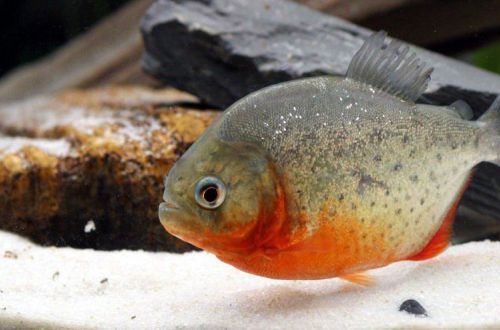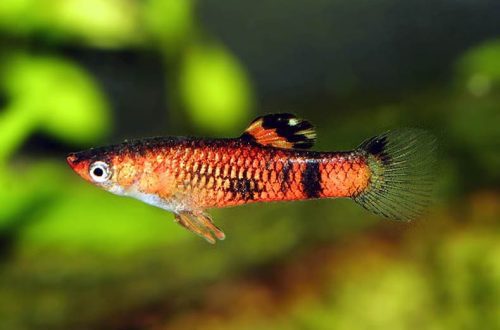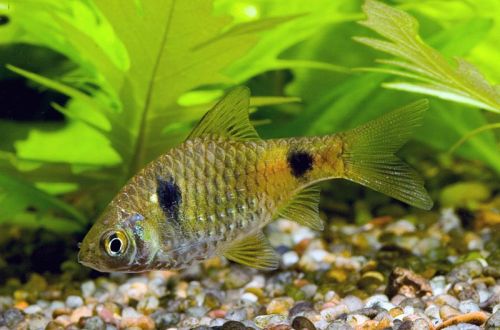
red-bellied piranha
The red-bellied piranha, scientific name Pygocentrus nattereri, belongs to the Serrasalmidae family. It is one of the most mentioned fish. It is widely known outside the aquarium trade, largely due to the large number of Hollywood films where Piranha appears as a bloodthirsty predator.

Keeping Piranha in an aquarium is quite troublesome and expensive (the price of equipment, a large amount of meat feed, etc.), but this fully compensates for the effect that it produces on others. Probably, this is one of the few fish that gives a certain status to its owner – this is a kind of Brand that does not require additional description or explanation.
Habitat
It is widely distributed throughout the tropical belt of South America, inhabiting the entire basin of the Amazon River and its tributaries, as well as in lakes and wetlands of southwestern Brazil. A flocking species, they prefer to stay in large groups of several dozen individuals, they eat both already dead animals and live prey.
Description
Powerful high body laterally compressed, large head with a convex jaw, studded with rows of sharp teeth. A large and strong tail, which allows you to instantly accelerate and grab a piece of prey in a fit of struggle with relatives. The color of the body is predominantly light gray, steely with a silver grain, as if the fish is strewn with sparkling dots, the belly is bright red.
Food
A carnivorous species, in a home aquarium you can feed not only live fish, but also serve pieces of meat, mussels, river shrimp, insects, earthworms. No dry industrial food is allowed, Piranhas will not eat it.
Maintenance and care
The way of feeding implies a large load on the biosystem of the aquarium, therefore, productive filters and water changes by 30-50% every two weeks are a prerequisite. You should not skimp on filtering equipment, you will need to purchase several canister filters, and one of them should work at half strength, it acts as a backup in case one of the main filters breaks down. Other necessary equipment: aerator, heater, low power lighting system.
In the design, provide a large space for swimming in the center and dense thickets of plants on the sides of the aquarium, as well as several shelters from snags, roots or artificial elements (ships, castles, etc.). Soil of sand or fine gravel.
Social behavior
Aggressive and ferocious at the same time, it is very shy, especially when kept alone or in pairs, with any knock or loud sound, Piranha tries to hide, hide. It is not compatible with other fish, so only a species aquarium is suitable for it. It is recommended to keep at least 10 individuals in a flock, optimally from 20 to 30. There is a hierarchy in the group, the largest and strongest fish will claim the best pieces of food and drive the least weak ones. Cannibalism is common, weak and sick fish will be eaten by relatives, so get only healthy fish, without external signs of damage.
Breeding / breeding
Fish can be bred in a home aquarium, but this is extremely difficult and there is no clear algorithm that will lead to a successful result. There are always important nuances.
Diseases
Piranhas in the wild often feed on dead animals, thereby being orderlies of the rivers, so their immunity is resistant to disease.





